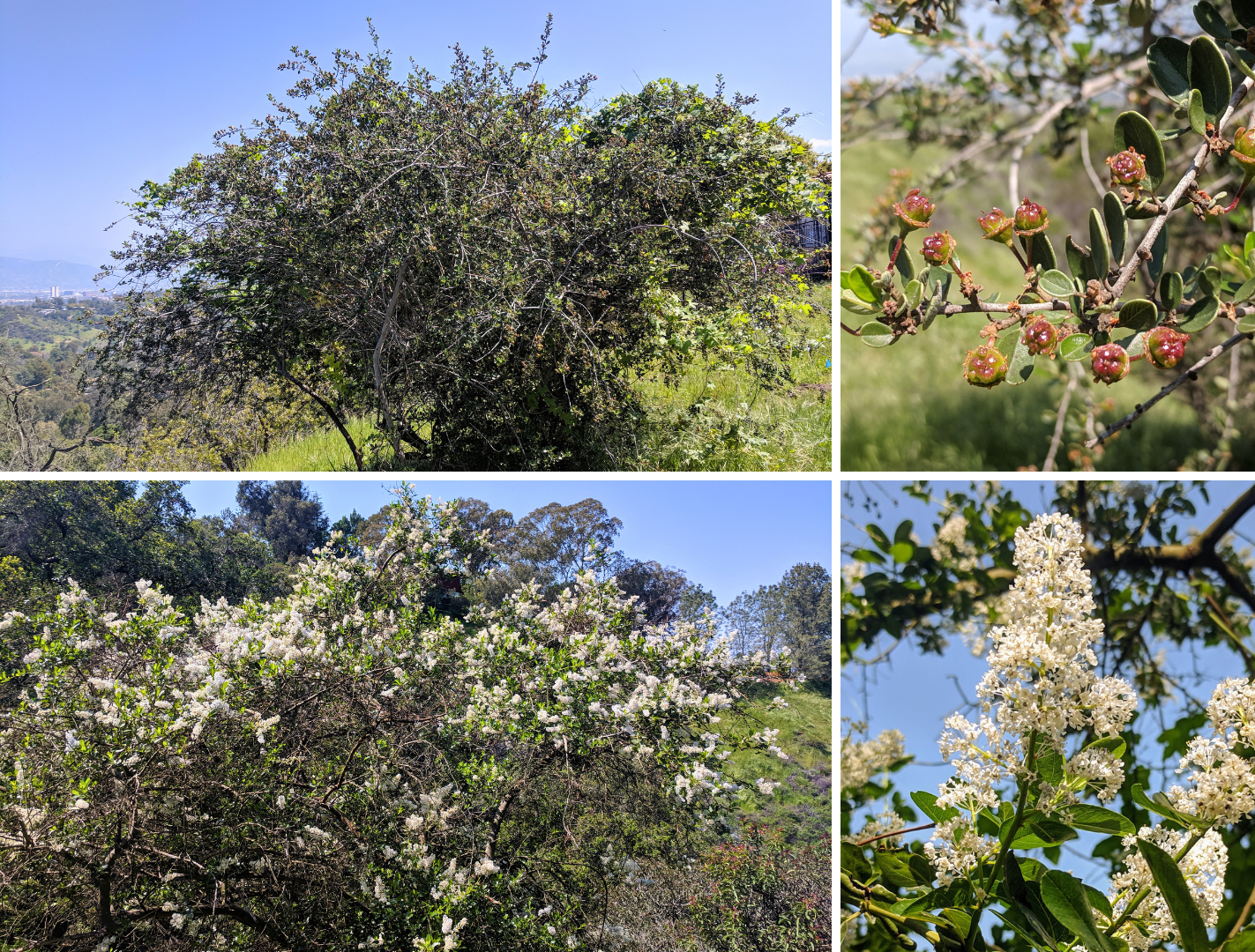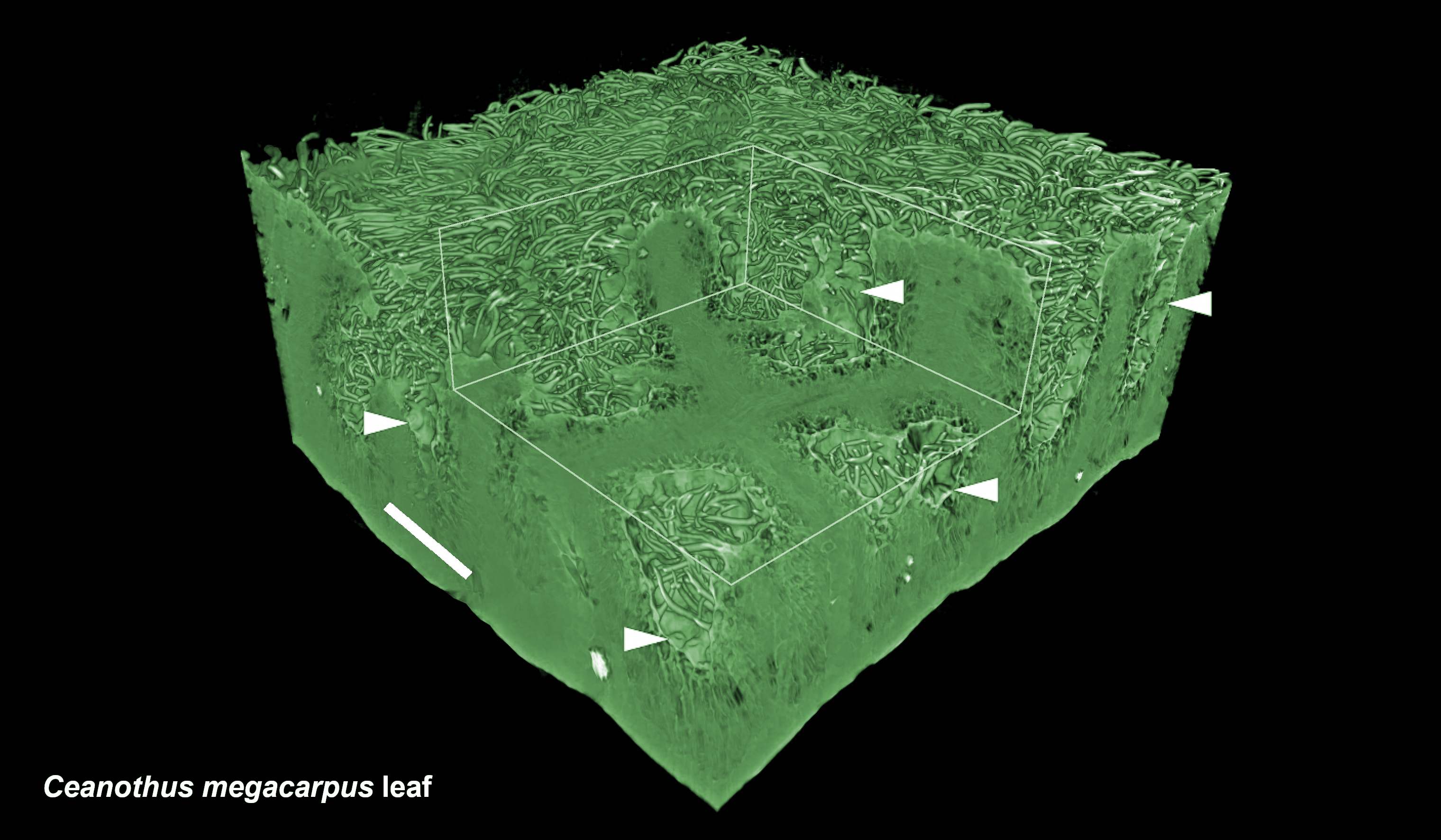Growing in the wild and in gardens, from Humboldt forests all the way to San Diego chaparral, the California lilac is a plant genus divided into two groups, Ceanothus and Cerastes. Ceanothus are associated with moister climates, whereas Cerastes have adaptations for surviving drier conditions. While both categories have stomata, pores that open and close to regulate CO2 intake, Cerastes pores have a special configuration—they’re housed in leaf indentations called stomatal crypts.
“Stomatal crypts are very rare among plants,” said Joseph Zailaa, Yale doctoral student and the corresponding author on a study of the California lilac. “This anatomical structure is thought to help provide drought tolerance.”

Using Beamline 8.3.2 at the Advanced Light Source (ALS), his research team has now uncovered secrets from the Cerastes crypts. “Classic microscopy techniques only give us a 2D picture of the leaf’s internal structure,” said Zailaa, “but microtomography at the ALS allowed us to image and view these crypts in three dimensions for the first time.” They also obtained 3D models of hydrated and dehydrated samples, allowing the researchers to observe the plants’ responses to drought.
Many arid-climate plants are drought tolerant. “They maintain functions such as water transport and photosynthesis despite the onset of drought, which uses up the plant’s water reserves,” Zailaa explained. California lilacs have developed an additional adaptation: drought avoidance. “Their stomata close and they shut down most of their function at the onset of drought to conserve water reserves,” Zailaa described. “This delays the plant from experiencing damage caused by excessive dehydration,” he added. His team’s work showed how stomatal crypts provide even further benefits to Cerastes. The researchers found that Cerastes had greater water storage capacity and water use efficiency than Ceanothus.
“Having the ability to generate high-resolution 3D anatomy data in plants has been really beneficial for my research and for advancing plant science research in general,” Zailaa said, describing how his team’s insights into these special drought-response mechanisms could have impacts in crops and natural ecosystem remediation. For instance, crop breeders could select for drought-tolerance traits, resulting in plants with lower irrigation needs. Organizations that replant after wildfires could also choose drought-tolerant species. “Native species that withstand extreme drought conditions will have a higher likelihood of thriving,” said Zailaa.
By pulling these drought-tolerance secrets out of the stomatal crypt, the research group has uncovered mechanisms not only to survive dry periods, but also to revive—and thrive.

J. Zailaa, S. Trueba, M. Browne, L.R. Fletcher, T.N. Buckley, C.R. Brodersen, C. Scoffoni, and L. Sack, “Sensitive Hydraulic and Stomatal Decline in Extreme Drought Tolerant Species of California Ceanothus,” Plant Cell Environ. 48, 1555 (2025), doi:10.1111/pce.15208.